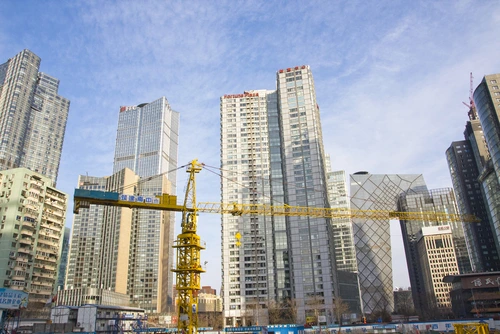
A hundred years ago London, New York and Paris were the biggest cities in the world. Today, all three retain cultural and economic might – but when it comes to their population, they’re tumbled way down the league tables.

Tokyo was the first emergent megacity, outgrowing its western peers in the middle of the 20th century. Today, New York barely scrapes into a global top dozen; London and Paris fall well outside. That trend looks set to continue for the next few decades.
Duncan Smith, at UCL’s Centre for Advanced Spatial Analysis, came up with a clever map to help us visualise all this. Drawing on UN data from 1950, 1990 and 2015, and projections for 2030, his map uses circles of different colours to represent the population of hundreds of cities at different points in time. The darker the circle, the earlier the growth happened.
The result is a map that’s both beautiful and rich in data, which allows you to see 80 years of urbanisation at a glance. In the developed world, where the circles are mostly dark, urbanisation was largely complete by 1950; but in Asia, Africa and Latin America, lighter circles show that it’s still under way.
Here are some of the headlines.
Urbanisation in Europe is pretty stable
Despite all our talk of urbanisation, the populations of Western European cities have actually remained fairly static – especially when compared with how fast cities further afield have been growing.
Few have boomed to the extent of Istanbul, which during the past 50 years has swollen from one million to 15 million, in the process overtaking London, Paris and Moscow to become Europe’s biggest city. Turkey’s population explosion has mirrored states across the Middle East, where urban populations are all on a substantial upward trajectory.
North America’s geography is shifting
Much like Europe, the populations of Canada and the northern parts of the US have stayed pretty solid. But the growth further south has been much more significant.
Mexico City and Guadalajara both boomed in the past 60 years and are still on the rise; so, too, have the populations of cities in California, Texas and Florida.
East Asia has seen three different phases of growth
The circles representing the major Japanese cities generally have large dark centres – equating to sizable populations prior to 1950. Already in the midst of a population boom that has been going on for 50 years, the likes of Tokyo and Osaka would get even bigger by 1990. Starting from a lower base, Korean cities also grew substantially in the latter half of the 20th Century.
More recently, though, east Asian growth has been all about China. Shanghai, Beijing, Chongqing, Guangzhou – all megacities that, by 2030, will have grown either trebled or quadrupled their 1990 populations.
The urbanisation boom to come
Cities in India, Bangladesh and Pakistan have seen a pretty steady population boom in the latter half of the last century. While Chinese cities have recently grown faster, their growth rate is set to fade – while that of their South Asian counterparts will continue unabashed. By 2030, Mumbai, Dhaka and Karachi will all have populations of over 25 million. Delhi will have closer to 40 million.
You can see that parts of west and central Africa are hurtling towards megacity status, too. For a long time, Africa’s urban growth has been concentrated in the Mediterranean north and in South Africa. Cairo will continue its steady growth to remain the continent’s largest city. But, to its south, the faster growth of Kinshasa, Lagos and Dar es Salaam epitomises a gradual shift in the continent’s perceived centre of gravity towards, well, the centre.
The interactive map contains loads of other information, too. You can hover over an individual city to find out more about its population change. And in the “analysis” tab, you can check out the rankings of the biggest ten cities from different time periods. The scale of urban growth is staggering: 65 years ago a city with a population of 20 million would have been by far the largest in the world; by 2030 it wouldn’t even make it into the top ten.
[Read more: So what’s with all these new planned cities?]






